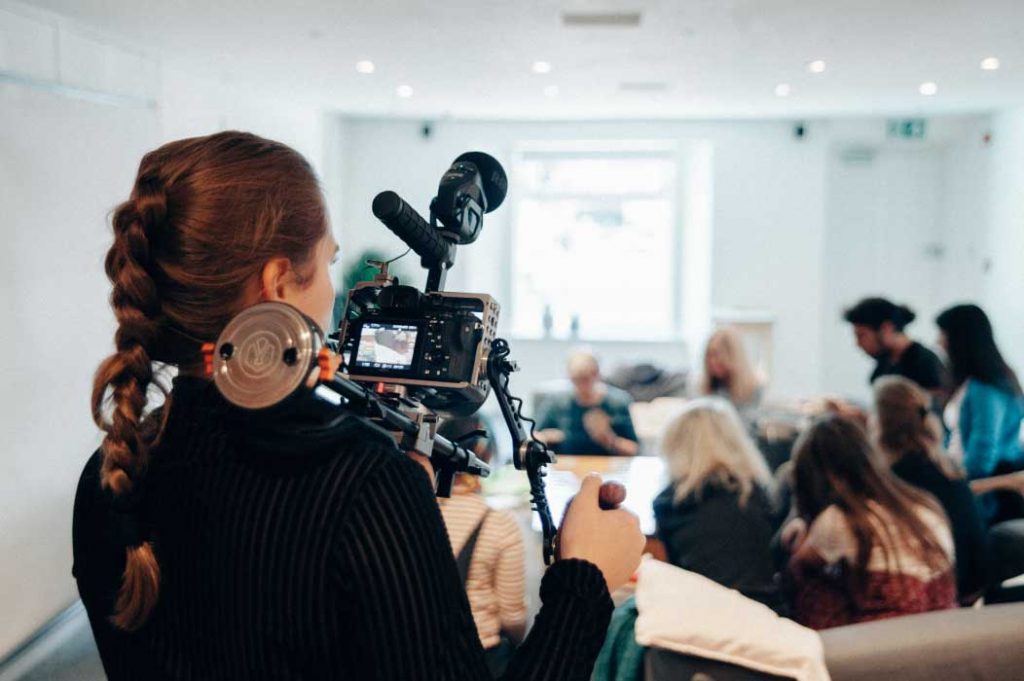In the field of communication and public relations, it’s very common to hear the term clipping. But what do we mean exactly by this concept? Who is responsible for obtaining it, how is it created and what is it for? If you are getting into the world of public relations, press clipping will be a key point in a media communication strategy, which will measure the success of it.
What is a press clipping
Have you ever searched your name on Google to see what came up? Well, doing a ‘press clipping’ is, in fact, something similar, but applied to the business field. The word ‘press clipping’ in English is ‘press cut’. We may also see terms like ‘press clipping’, ‘media clipping’ or just ‘clipping’. With this term we refer to the collection of all kinds of articles and news in the media that mention a specific topic, an event, a company or a person.
Initially, this tool was born to collect all the news that mentioned a brand in the written press. But with the introduction of television, radio and the internet, press clipping has extended to all these channels.
Therefore, the press clipping will collect the mentions made of a brand in:
- Printed newspapers and magazines.
- Television programs.
- Radio or podcast programs.
- Online, whether in media, blogs or websites.
Generally, press clipping is the main tool to monitor and evaluate the effort of a public relations campaign. For example, when we send a press release to the media, the goal of this submission is to get mentions in the media. Therefore, the press clipping will be the tool with which we will monitor the success of our public relations campaign.

What is the purpose of press clipping
The main objective of making this collection is to monitor the presence and media impact of a company or a person. What benefits can carrying out this tracking have?
- Public image monitoring: monitoring the perception of a subject in the media is important. By analyzing their mentions in the press, the public’s perception can be understood and even aspects to improve within the communication plan can be detected. This monitoring is useful, for example, for a well-known person, an opinion leader or a senior executive, who monitor the presence of their name in the media to know what is said about them on a daily basis.
- Competition analysis: You will be able to monitor the activity and presence of competitors in the media. In this way, it will be possible to visualize the strategies of the competition and establish the threats or opportunities of your brand in the market.
- Documentation and archive: keeping a historical record of all the mentions that your brand has had in the media is very useful when having references over time, as well as for making interannual reports that allow us to know the evolution of a brand’s visibility over several years.
- Evaluation of communication campaigns: Finally, and perhaps the most important for communication agencies, clippings allow the effectiveness of public relations campaigns to be assessed. The reach and impact of companies can be measured in the mentions and media coverage they receive.
How do we make a press clipping?
Generally, it is the public relations agencies or the communication departments of companies that are in charge of recording and monitoring mentions. To make a good press clipping from scratch, we recommend following these tips:
Establish the search frequency
First, we will establish a specific day or time to do the searches about my brand. This frequency will depend on the urgency and the number of mentions that a company has in the media. For example, if the company usually registers mentions daily or risks having a reputational crisis, it is preferable to do the task of searching for mentions daily (ideally in the morning and in the afternoon). If on the contrary the brand only has mentions as a result of public relations work, a weekly periodicity can be set for news searching.
Collect news from your target brand
For this phase, we recommend using services from external providers, such as Scapefox or Hallon, which facilitate the processes of analysis and collection of articles both online and on radios and televisions. In addition, you ensure that you respect copyright, as media monitoring companies that market press clipping services must have the authorizations of newspaper editors and press to be able to incorporate articles from their headlines into the dossiers they prepare. Generally, these providers will provide us with an image or pdf for each online or written press clipping, and the link to the audio piece in the case of radio and video in the case of television.
Set some meters
Once all the clippings have been collected, we have to analyze them and determine their value. The most common KPIs are:
- OTS (opportunity to see) or reach: with this measure we refer to the audience or number of people who have been able to see the press clipping. If it is television it will be the number of viewers of the program; if it is radio the number of listeners; and in the case of the press they will be the readers or unique users in their online format.
- Economic value: the equivalent value of that clipping if it were a paid piece. This meter is one of those that have traditionally determined the ROI of a PR campaign.
Report Preparation
Now that we have located the press clippings and their value, we will be able to generate a report or deliverable that collects all the information in full. An Excel sheet can be used with all the articles and their meters, or the format that best suits the brand. If the visual part of the clippings is important, a press dossier or coverage book can be prepared, which in addition to the data on each mention would include a screenshot of each press clipping.
Press clipping template
We leave you a sample template to prepare a press clipping of a campaign in the media, including a brief final analysis that will be very useful to define next steps in the strategy:
BRAND DAME:
Date: [Date report]
Period covered: [From – Until]
Executive Summary
Total mentions: [Total number of mentions]
Covered media: [Number of media covered]
Tone of mentions: [Positive, Negative, Neutral]
Detail of Mentions
1. [Article Title]
Publication date: [Date]
Medium: [Name of the medium]
Link: [URL of the article]
Summary: [Brief summary of the article content]
Tone: [Positive, Negative, Neutral]
Audience or reach:
Economic value:
Relevant excerpt:
[Quote or relevant excerpt from the article]
2. [Article title 2]
Publication date: [Date]
Medium: [Name of the medium]
Link: [URL of the article]
Summary: [Brief summary of the article content]
Tone: [Positive, Negative, Neutral]
Audience or reach:
Economic value:
Relevant excerpt:
[Quote or relevant excerpt from the article]
(replicate as many times as clippings you have detected)
Campaign analysis and conclusions
Most frequent topics: [Description of the most mentioned topics in all media]
Tone trend: [Analysis of how the tone of the mentions has varied over time]
Main conclusions: [Description of the main conclusions of the analysis]
Recommendations: [Suggestions based on the analysis of mentions]
In summary, press clipping is an essential tool in the field of public relations and communication. It not only allows organizations to monitor their media presence and that of their competitors, but also provides valuable information to assess and adjust their communication strategies. With the help of specialized tools, the process of collecting and analyzing media coverage has become more efficient and precise, becoming an indispensable resource for any effective communication strategy.
At LF Channel we prepare press clippings for our clients on a regular basis. In addition, we share on our blog some ‘hits’ achieved by the team in the press throughout the year. Enter our blog to check our LF HITS.
*LF Channel may have partially used AI for the creation of blog content.
